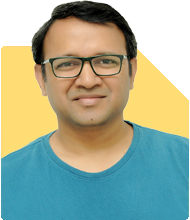47-Year-Old With 9 Crore Invested: How Much More To Reach 50 Crore By 58?
Ramalingam Kalirajan |10899 Answers |Ask -Follow
Mutual Funds, Financial Planning Expert - Answered on Jul 23, 2024
He has an MBA in finance from the University of Madras and is a certified financial planner.
He is the director and chief financial planner at Holistic Investment, a Chennai-based firm that offers financial planning and wealth management advice.... more

Hi, I am 47 yrs old , have around 9 cr in mutual funds, PF of 80 lakhs ..no liabilities at all...I invest around 3 lakhs per month in SIP, 50K monthly in NPS 1.5 lakhs /year in PPF, I want to work till 58..how much do I need to invest to create a corpus of 50 crores? thanks
You have Rs 9 crores in mutual funds.
You have Rs 80 lakhs in your PF.
You invest Rs 3 lakhs per month in SIPs.
You invest Rs 50,000 monthly in NPS.
You invest Rs 1.5 lakhs annually in PPF.
You plan to work till age 58.
You have no liabilities.
Your goal is to create a corpus of Rs 50 crores.
Assessment of Current Investments
Mutual Funds
Mutual funds are a good choice. They offer diversification and potential growth.
Consider reviewing the performance of your current mutual funds. Ensure they align with your goals.
Provident Fund (PF)
Your PF is a safe and reliable investment. It provides steady returns and is a good retirement tool.
Systematic Investment Plans (SIPs)
Your SIPs are beneficial for disciplined investing. They reduce the risk of market volatility over time.
National Pension System (NPS)
NPS offers tax benefits and a pension after retirement. It is a solid addition to your retirement planning.
Public Provident Fund (PPF)
PPF is a risk-free investment. It offers good returns and tax benefits. It is an excellent choice for long-term savings.
Evaluating Future Investment Needs
To reach your goal of Rs 50 crores, you need to evaluate your current investments.
You need to consider the expected returns on your investments.
You need to assess the impact of inflation on your corpus.
Expected Returns
Mutual funds can provide varying returns. Historically, they have given 10-12% returns annually.
PF, NPS, and PPF typically offer lower returns. They are in the range of 7-9% annually.
Inflation Impact
Inflation reduces the real value of your corpus. You must factor in inflation to meet your future needs.
Strategies to Reach Rs 50 Crores
Increase SIP Investments
You can consider increasing your SIP investments. This will help you accumulate more over time.
Diversify Your Portfolio
Diversify your investments in different asset classes. This reduces risk and maximizes returns.
Actively Managed Funds
Consider investing in actively managed funds. They have the potential to outperform the market.
Actively managed funds offer professional management. They aim to beat index funds in returns.
Regular Review and Rebalancing
Regularly review your portfolio. Ensure it aligns with your goals and risk tolerance.
Rebalance your portfolio periodically. This maintains your desired asset allocation.
Disadvantages of Index Funds and Direct Funds
Index Funds
Index funds follow the market. They do not aim to outperform it.
They may not provide the best returns in all market conditions.
Direct Funds
Direct funds require active management by the investor. This can be time-consuming and requires expertise.
Investing through a Certified Financial Planner (CFP) ensures professional guidance. Regular funds provide this advantage.
Final Insights
You have a strong financial foundation.
You need to carefully plan to reach your Rs 50 crores goal.
Focus on increasing your investments.
Diversify your portfolio to manage risk.
Consider actively managed funds for better returns.
Regularly review and rebalance your portfolio.
Seek professional guidance from a Certified Financial Planner.
Best Regards,
K. Ramalingam, MBA, CFP,
Chief Financial Planner,
www.holisticinvestment.in
You may like to see similar questions and answers below
Ramalingam Kalirajan |10899 Answers |Ask -Follow
Mutual Funds, Financial Planning Expert - Answered on Jun 18, 2024
Ramalingam Kalirajan |10899 Answers |Ask -Follow
Mutual Funds, Financial Planning Expert - Answered on Jul 17, 2024
Ramalingam Kalirajan |10899 Answers |Ask -Follow
Mutual Funds, Financial Planning Expert - Answered on Jul 06, 2024
Milind Vadjikar | Answer |Ask -Follow
Insurance, Stocks, MF, PF Expert - Answered on Oct 31, 2024
Ramalingam Kalirajan |10899 Answers |Ask -Follow
Mutual Funds, Financial Planning Expert - Answered on Dec 17, 2025
Ramalingam Kalirajan |10899 Answers |Ask -Follow
Mutual Funds, Financial Planning Expert - Answered on Dec 17, 2025
Ramalingam Kalirajan |10899 Answers |Ask -Follow
Mutual Funds, Financial Planning Expert - Answered on Dec 17, 2025
Ramalingam Kalirajan |10899 Answers |Ask -Follow
Mutual Funds, Financial Planning Expert - Answered on Dec 17, 2025
Ramalingam Kalirajan |10899 Answers |Ask -Follow
Mutual Funds, Financial Planning Expert - Answered on Dec 17, 2025
Mayank Chandel |2576 Answers |Ask -Follow
IIT-JEE, NEET-UG, SAT, CLAT, CA, CS Exam Expert - Answered on Dec 17, 2025
Radheshyam Zanwar |6747 Answers |Ask -Follow
MHT-CET, IIT-JEE, NEET-UG Expert - Answered on Dec 16, 2025
Shalini Singh |181 Answers |Ask -Follow
Dating Coach - Answered on Dec 16, 2025
Patrick Dsouza |1429 Answers |Ask -Follow
CAT, XAT, CMAT, CET Expert - Answered on Dec 16, 2025
Nayagam P P |10858 Answers |Ask -Follow
Career Counsellor - Answered on Dec 16, 2025


























